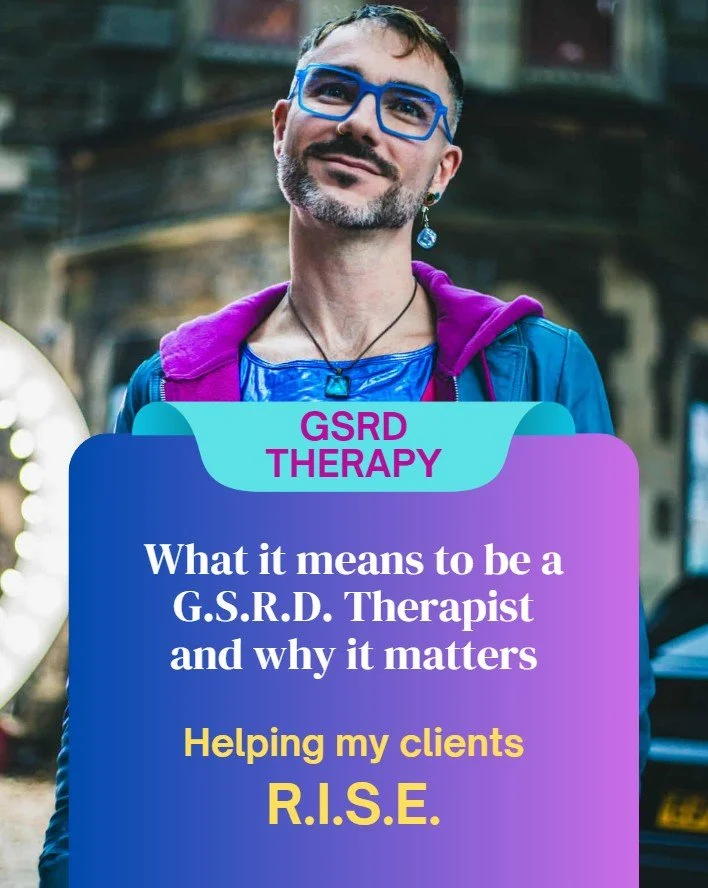GSRD Therapist
— a Gender, Sexual, and Relationship Diversity Therapist practises inclusively, compassionately, and consciously with awareness of the full spectrum of human identity and connection. It goes beyond acceptance; it is a commitment to active affirmation, anti-oppressive practice, and ongoing learning in support of all clients’ right to authenticity and self-determination.
🌈Understanding GSRD
As described by Silva Neves (2023, Therapy Today), gender, sex, sexuality, and relationship diversity together encompass a wide and complex range of human experiences:
Gender diversity includes people who are cisgender, transgender, agender, bigender, crossdressers, genderqueer, genderfluid, or nonbinary, as well as Indigenous gender identities historically marginalised by colonial frameworks.
Biological sex diversity includes intersex people — those whose sex characteristics don’t fit binary notions of “male” or “female.”
Sexuality diversity embraces the full spectrum of sexual orientation and identity, including those on the asexual spectrum and those who engage in sex work, BDSM, kink, fetish, or power-exchange as authentic expressions of erotic identity.
Relationship diversity includes aromantic, polyamorous, nonmonogamous, swinging, and sex work relationships, as well as monogamous or monogamish partnerships.
🌈 R.I.S.E. — Core Principles of a GSRD Therapist
R — Reflection & Responsibility
A commitment to continual learning, self-awareness, and accountability. This includes ongoing education around trauma, attachment, cultural and sexology theories, as well as sensitivity to evolving language, research, and community contexts.
I — Intersectionality & Inclusion
Understanding how race, culture, class, disability, and religion intersect with gender, sexuality, and relationship experience — and cultivating spaces that honour and celebrate all identities and relationships as natural expressions of human diversity.
S — Safety & Solidarity
Offering a trauma-informed, non-judgmental space where clients can feel seen and supported — especially those who have experienced stigma, discrimination, or medicalised harm. Safety is both emotional and relational, grounded in compassion and mutual respect.
E — Empowerment & Equity
Supporting each client’s journey toward authenticity, embodiment, intimacy, and belonging, while also recognising the broader systems of oppression that impact well-being. This involves fostering personal agency, social justice, and community care.
🌈Ethos of Practice
To practise from a GSRD perspective is to:
Recognise that diversity is the norm, not the exception.
Challenge shame, stigma, and restrictive social narratives around love, sex, and identity.
View therapy as a space for liberation, healing, and celebration — where every form of connection is valid and valued.
🌈Why It Matters
Traditional therapy models often reflect narrow, heteronormative, mononormative and cisnormative assumptions about what is “healthy” or “normal.” The GSRD approach expands that framework — situating wellbeing within the context of diversity, justice, and human dignity.
To be a GSRD therapist is to hold space for the full expanse of human experience — not as deviation, but as a vital expression of what it means to be human in all its diversity.




